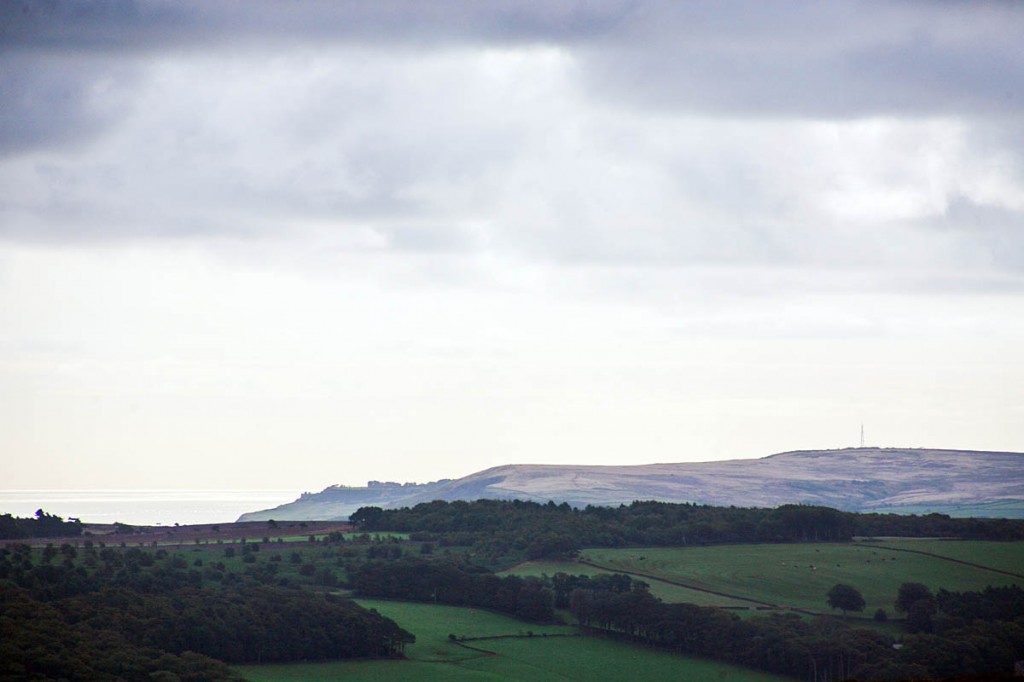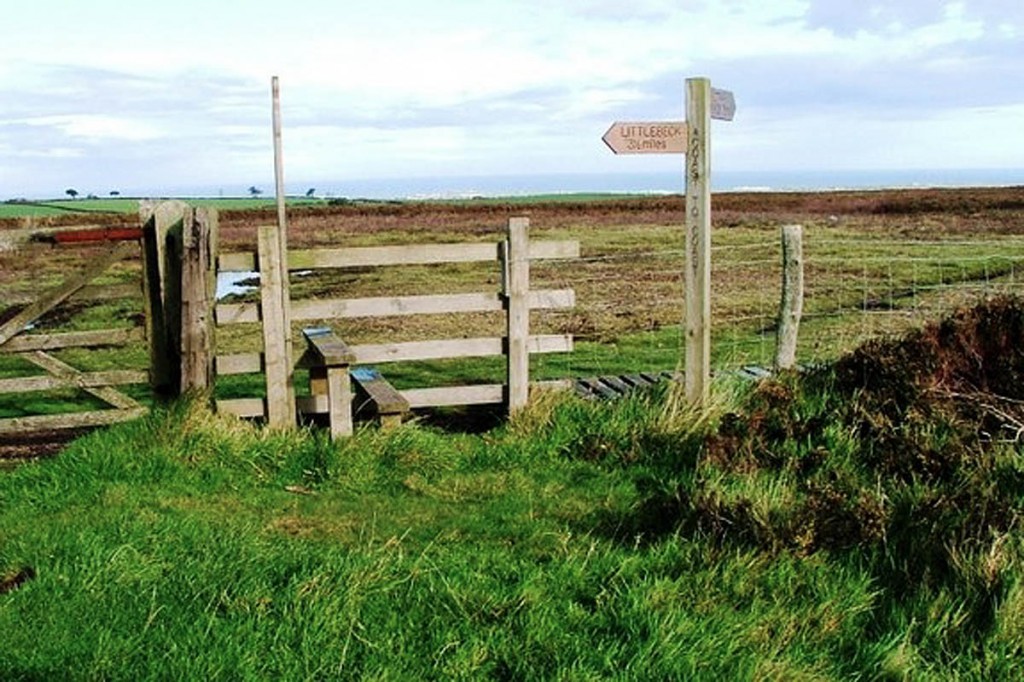
The main mine workings would be close to the route of the Coast to Coast Walk
Campaigners said they may challenge the decision to allow the world’s biggest potash mine to be set up in an English national park.
North York Moors National Park Authority members narrowly approved the York Potash plans for the mine near the route of the Coast to Coast Walk.
The plans were passed by a vote of eight-to-seven this evening at a special meeting called to consider the proposals.
Park authority officers did not make any recommendation in their report to the planning committee. The application was the largest ever received by the authority, and also includes proposals for a 36.5km (23-mile) tunnel to Teesside to transport the mineral
York Potash hopes to extract billions of tonnes of polyhalite and other minerals used in fertilisers, much of which it plans to export.
But the Campaign for National Parks called for a public inquiry into the plans and also said it might consider applying for a judicial review of this evening’s decision.
Andy Wilson, chief executive of the NYMNPA said: “Today’s decision is the culmination of hard work, of thorough examination and in-depth discussions of the largest planning application this national park, and indeed any English national park, has had to consider.
“I appreciate that there will be many disappointed by today’s decision but members felt that the long term benefits for the local, regional and national economy were transformational.
“This truly exceptional nature plus the measures proposed by the company to mitigate harm and deliver widespread environmental benefits to the park over a long period of time tipped the balance in favour of approval.”
The authority said members acknowledged the considerable harm a development the size of the proposed mine will have on the special qualities of the North York Moors, particularly during the construction phase. “They felt however that the projected long-term economic and social benefits to some of the most deprived parts of the region outweighed these concerns and provided the truly exceptional circumstances required by national planning policy to grant approval to a major development within a national park,” an authority spokesperson said.
York Potash, which is owned by Sirius Minerals, estimates that the new potash mine could create up to 1,000 jobs and would also bring revenue benefits at a national level.
It said resources to compensate for the harmful impacts of the development will be paid by the Company over 100 years. The park authority said funding will be used for a variety of projects including tree planting and increased promotion of the wider North York Moors to potential visitors.
Ruth Bradshaw, policy and campaigns manager at the Campaign for National Parks said: “We’re really disappointed that NPA members have approved the construction of the world’s largest potash mine in the North York Moors.
“We have long maintained that this project is completely incompatible with national park purposes and that the promised economic benefits could never justify the huge damage that it would do to the area’s landscape and wildlife and to the local tourism economy.
“There was clear evidence of the planning grounds for refusing this project in the report produced by NPA officers but there has also been huge pressure for NPA members to approve a project which has been widely promoted as bringing employment to the area, even though many of the jobs will not go to local people.
“The only way to ensure that the full implications of this extensive proposal, with its multiple and complex applications is for there to be a public inquiry covering the whole of the York Potash project and for the final decision to be made by the Secretary of State.
“We called for such a public inquiry months ago as it would ensure that decisions are based on an accurate understanding of the overall costs and benefits of the whole project and would allow expert witnesses to provide evidence on some of the complex issues that need to be considered.
“Given there are strong planning grounds for refusing this application, we are confident that any public inquiry would result in today’s decision being overturned so we can finally see an end to this threat to the North York Moors.
“As a last resort, we will also be considering a legal challenge of the decision, given that this is such an important test case of the protection for national parks in national planning policy. We have six weeks to apply for a judicial review so we now need to decide whether there are grounds for such a challenge.”
The proposed main mine shaft and buildings at Dove’s Nest Farm near Littlebeck would be close to the route of the Coast to Coast Walk, followed by thousands of walkers each year.
The national park officers’ report said: “As the applicant recognises, a key concern is the significant increase in HGV traffic on the B1416 which would directly affect walkers using the Coast to Coast route and cyclists on the Moor to Sea Cycle Route 9.
“The combination of construction traffic, noise and views of the site would seriously harm the existing quiet rural character of the area and the natural beauty of the landscape, reducing the quality of recreational experience for residents and visitors alike and affecting the important final (or first) stage of the Coast to Coast Walk.
“The applicant recognises that Coast to Coast walkers would be affected and its landscape consultant states that one or more of the construction sites would be visible for nearly three-and-a half-hours. This would include open moorland sections of the route (at Danby High Moor and Sleights Moor) and parts of the Esk Valley as well as sections in the vicinity of Dove’s Nest Farm.
“Officers, however, have concluded that the Lady Cross Plantation construction site would be very visible over a stretch of seven miles of the route and the minehead site would be visible for five miles.”

Heinrich Pinochet
30 June 2015The North Yorkshire Moors should never have been designated a National Park. It was only sitting there waiting for a bunch of tory vermin to destroy it - and now it's happened.
Sheepy
01 July 2015It doesn't matter where it is. In this country, large companies only need to do 2 things to get planning permission for almost anything. Bribe the council with promises of payments (local investment) and propose unquantifiable numbers of jobs which usually never actually materialise.
Tesco's are normally quite good at that sort of thing.
Next thing you know this government will be wasting Billions on a railway that no one wants so that you can get to London 10 minutes quicker, whilst in the North you'd be lucky to find a train that runs anywhere at all.
Denyse Day
01 July 2015They should leave the country side alone, spoiling it for walkers, people who live there and cyclist. What happened to the 'we will not build on green belt land' The country side is there for all to enjoy not to put a monstrosity on it.
paul
07 July 20151% of the park for £1.6 billion into the UK economy.... 1000+ jobs, MASSIVE investment in tourism... I could go on
This is an investment for your childrens benefit and your childrens children.
In 5 years visual impact will be minimal and to be honest the park needs investment to protect it going forward.
Sirius will provide that investment and make the Park an amazing place to visit.
I'd love to visit a working mine!!!